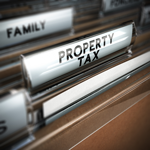Why Invest in Flagstaff?
The economy of the Region thrives on its strong agriculture and energy sector activity. A distinct regional advantage is the proximity to the “Hardisty Hub,” the central pipeline where the majority of Alberta’s oil production converges for transportation to North American energy markets.
The population and primary trading area of the Region is comprised of 8,361 people, which encompasses the boundary of Flagstaff County, and extends to a radius of 40 km. The secondary trading area of 56,102 people extends to a radius of 80 km. This greater trading area encompasses portions of the neighbouring municipalities which include Camrose County, Beaver County, County of Paintearth, M.D. of Provost, Stettler County, and M.D. of Wainwright, as well as the City of Camrose, Towns of Provost, Stettler and Wainwright, and the smaller towns and villages within an 80 km radius. The Region has a steady transient population which increases the total trading area to 59,102 people.
 The Flagstaff Region has a skilled workforce with 38% possessing some form of post-secondary trade or university certificate, diploma or degree. The unemployment rate in the Region is quite stable, staying in the range of 2.5 – 4.0% for the past few years; this consistency ensures a steady workforce in the region.
The Flagstaff Region has a skilled workforce with 38% possessing some form of post-secondary trade or university certificate, diploma or degree. The unemployment rate in the Region is quite stable, staying in the range of 2.5 – 4.0% for the past few years; this consistency ensures a steady workforce in the region.
The Region offers affordable housing options, with the average house price of $156,820. When compared to the Central Alberta Region’s average of $310,769 or the provincial average of $379,730, house prices are 41% lower in the Region than anywhere in the Province.
The Region’s equalized assessments are competitive with other areas of the province. The average residential taxes on a $100,000 assessment would be approximately $1,362. The average commercial taxes on $100,000 assessment would be approximately $2,537. 
As an indicator of commercial tax competitiveness, the differential between commercial and residential tax rates in the Flagstaff region is on par with the Alberta community average of 2.5.
Although the reported average household income for the region is lower than the provincial average, when combined with a lower cost of living and affordable housing options, this leaves more disposable income in the hands of residents—supporting a dynamic and vibrant retail and business services sectors.
There is room to grow your business or invest within the Flagstaff Region, with undeveloped, affordable commercial and industrial lands that offer good highway and rail access. The expanding energy sector’s increased demand for housing creates new opportunities for single and multi-family housing development. The rural communities offer well-established infrastructure and commercial buildings ready for your business opportunity. For those seeking to return to rural living, turnkey business investment opportunities exist in the Flagstaff Region. We welcome you to the Flagstaff Region.